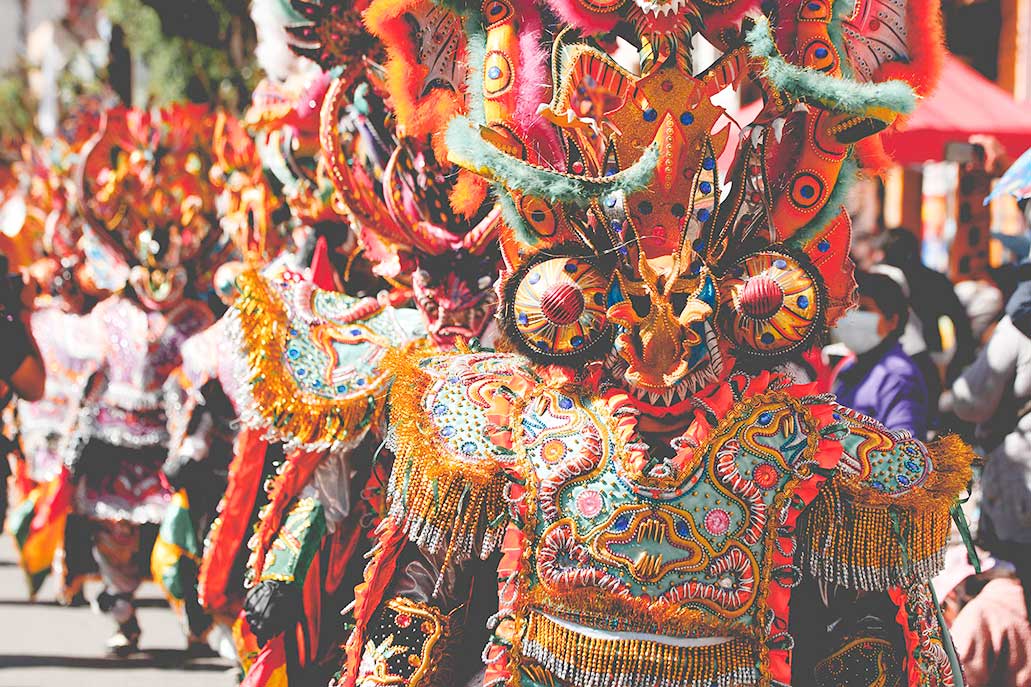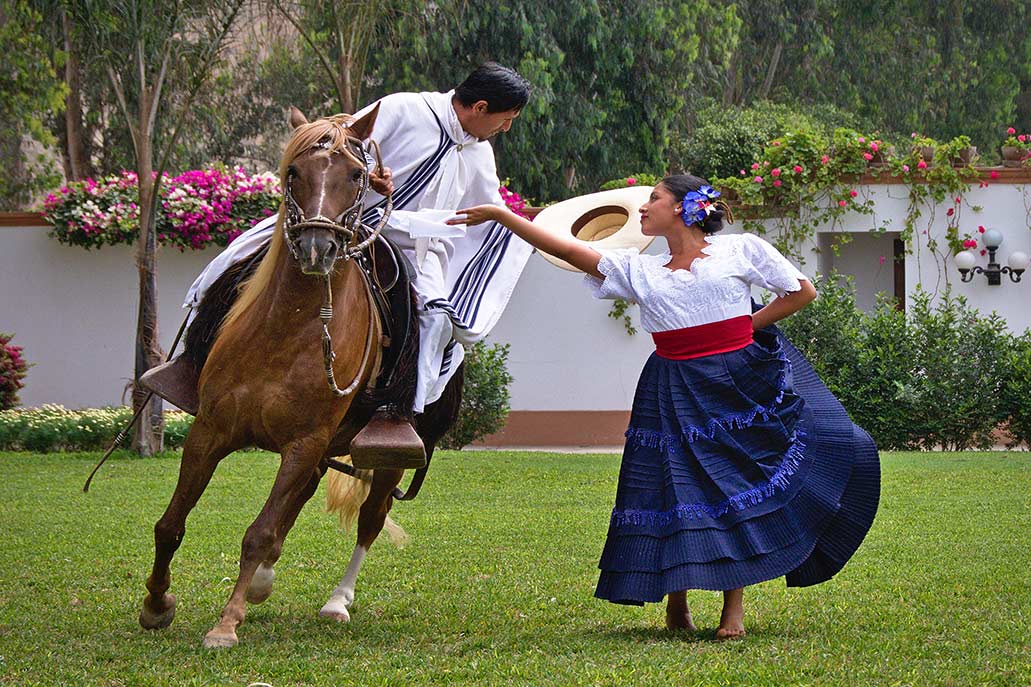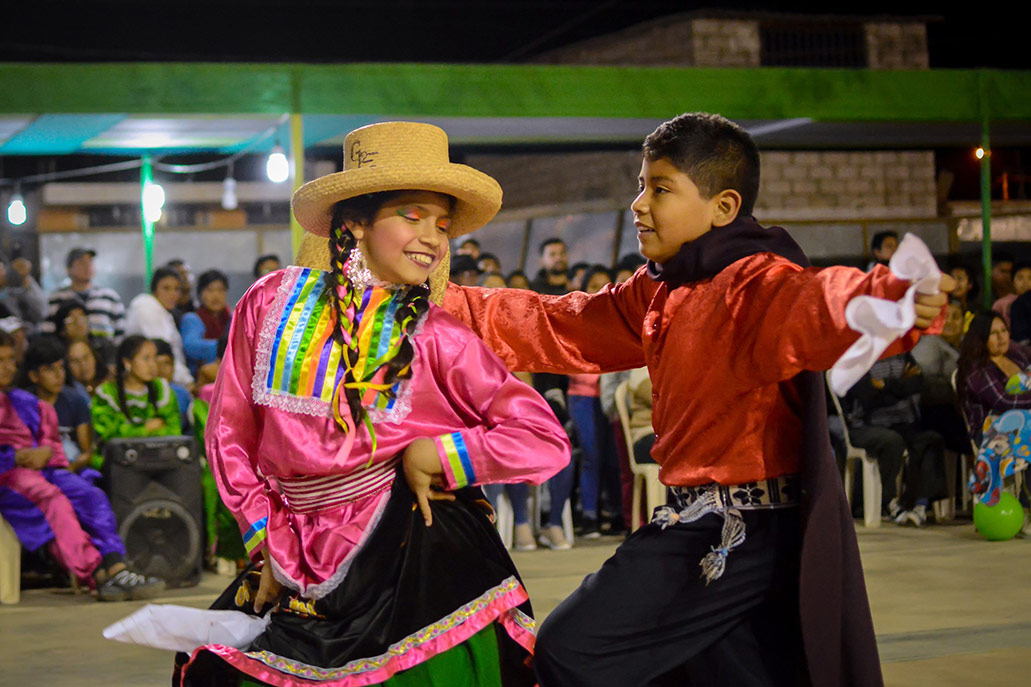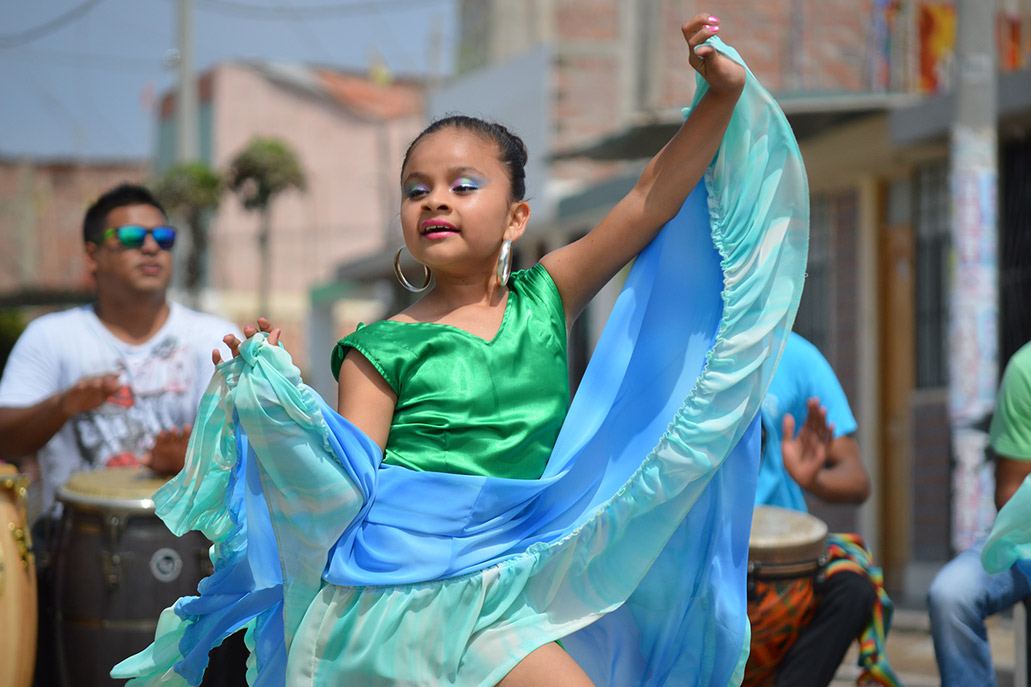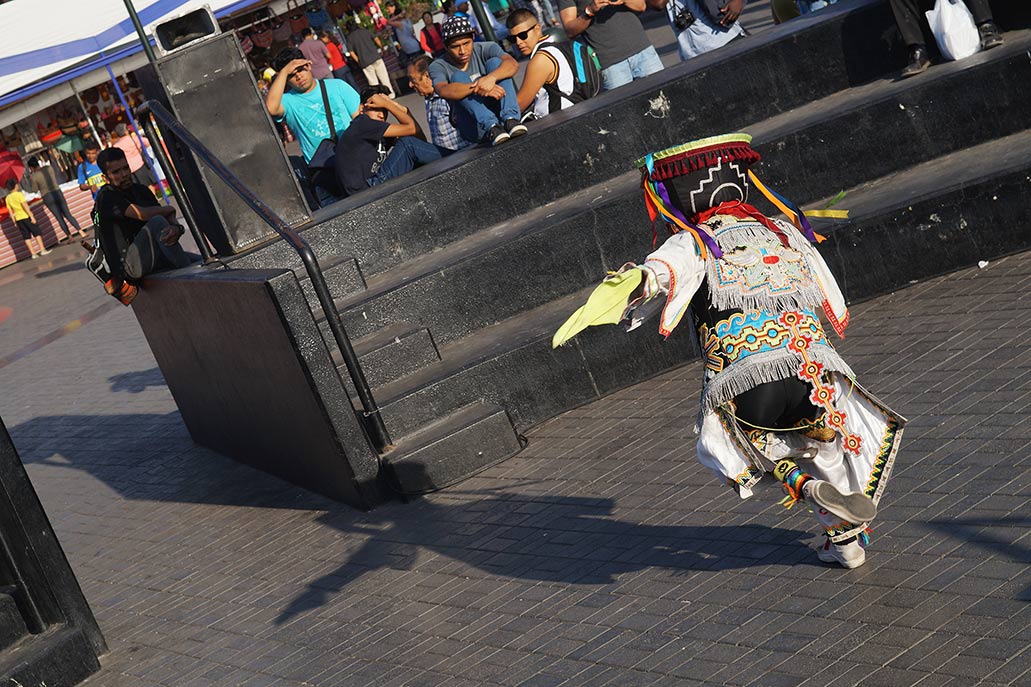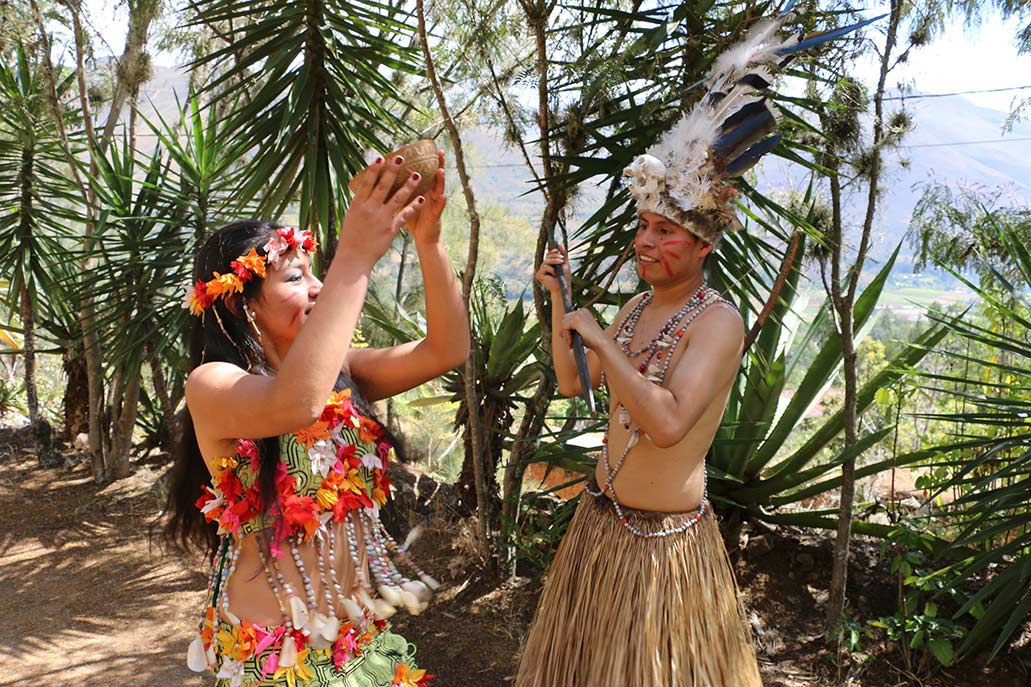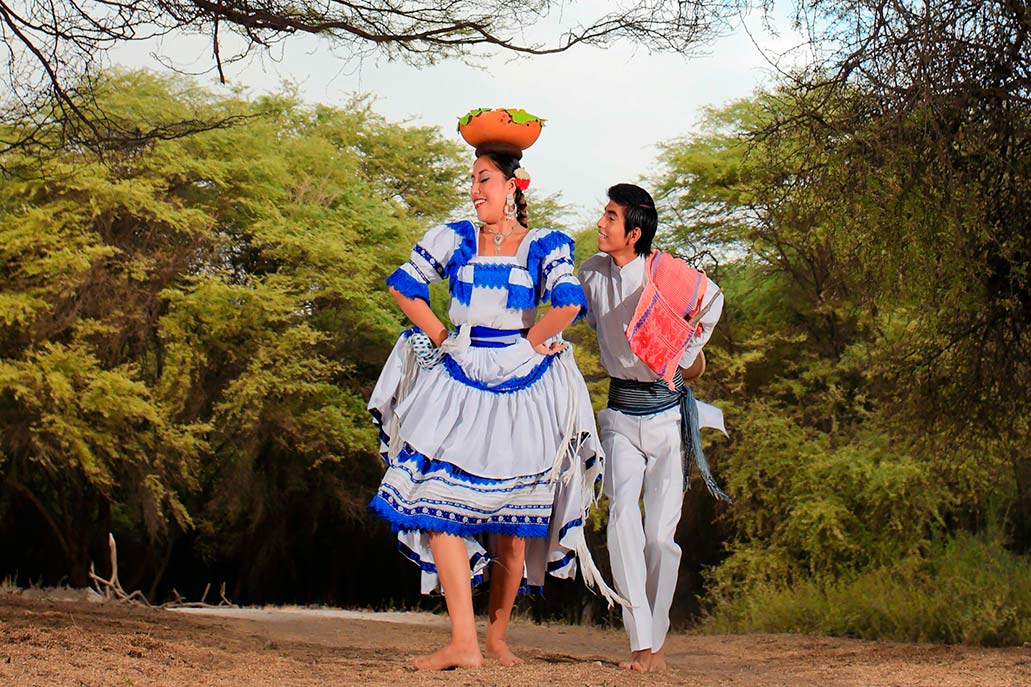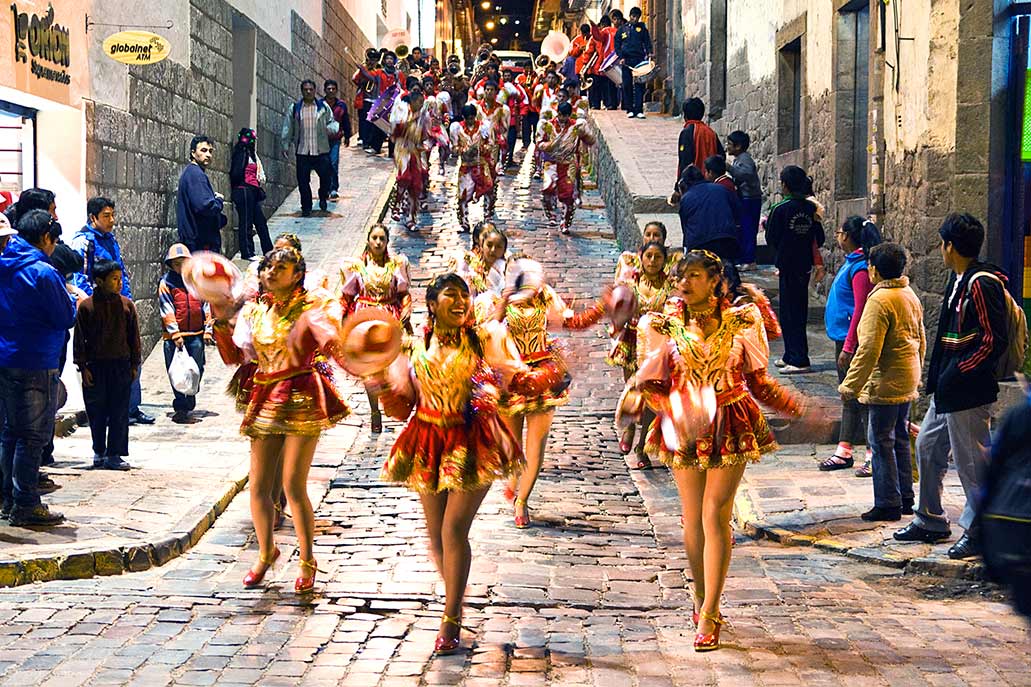The 8 most representative dances of Peru
Peru is a country with an ancient and immense history, which can be manifested through its many dances. These have their origin in pre-Hispanic times, in the colony and the republican period with the migration of different foreign settlers. Dances exist on the desert coast, in the towns of the Andes Mountains and in the many Amazonian communities. These can be divided into agricultural dances, carnival dances, ceremonial dances, religious dances, ballroom dances, house dances and more. Get to know the 8 most representative of Peru!.
Content
The dances of Cusco – Cusco is one of the regions of Peru with the largest number of traditional dances, which date back to colonial times and even to Inca times. The dances were renewed through the centuries. Some of the most famous dances are: the chunchos dance, the ukukus, the kachampa, the contradanza, the wallata, the cholo qorilazo and more. These dances can be seen in patron saint festivals such as the Paucartambo Festival or the Cusqueños Carnivals. All dances have a story to tell.
The northern sailor
The northern marinera is one of the most representative dances of Peru. Although there are different types of merino dances on the coast and even in the Peruvian mountains; The northern dance (originally from the regions of La Libertad and Lambayeque) is the most widespread. It is a ballroom dance that was born from Hispanic, indigenous and African mixing. It is considered Cultural Heritage of Humanity by UNESCO.
The northern sailor owes its name to the Peruvian writer Abelardo Gamarra Rondó who named it in honor of the Peruvian Navy after the Pacific War in 1879. Research suggests that its origin dates back to the Chimo dance of pre-Hispanic origin in Lambayeque. In colonial times it evolved as an elegant ballroom dance. Today in the city of Trujillo (called the National Marinera Capital) the National and World Marinera Competition is held in January.
- Where to see?: In the city of Trujillo in the National and World Sailor Competition (in January).
- How much does it cost?: The entry ticket for this contest costs between 40 to 80 soles per person.
The huayno
The huayno is the most widespread dance in the towns of the Andes Mountains of Peru. It is an agricultural dance used since pre-Hispanic times to carry out planting and harvesting work. However, throughout the centuries, the dance had Hispanic and religious influence. Today it is celebrated mainly in the patron saint festivities of saints and main virgins. It is believed that its name comes from the Quechua word ‘Waynaricunataky’ which means ‘Song that represents a young man who is in love’.
The huayno is danced mainly in choreographies by groups of men and women. The clothing varies depending on the region, but generally it is typical Andean clothing for agricultural tasks. The men wear pants and vests while the women wear skirts and everything adorned with flowers. The huayno is danced mainly in the southern regions of Peru such as Ayacucho, Cusco, Arequipa, Apurímac, Huancavelica and Junín.
- Where to see?: At the festival of the Virgin of Carmen de Paucartambo in Cusco (July 15 to 18).
- How much does it cost?: Free entry for all.
The festejo
The celebration is a representative dance of Peru, originating from the coast and influenced by people of African descent. The celebration is danced mainly in the regions of Ica and the south of Lima. Precisely its first manifestations date back to Lima in the 17th century. Since the 19th century, celebrations have been collected in Cañete and Chincha. Its name refers to its joyful character since it is a carnival dance.
The celebration originally used musical instruments such as leather drums and donkey jaws. However, these were gradually replaced by the Peruvian cajon and the guitar. The choreography is rhythmic, with arm and leg movements. The dance is as a couple. The clothing is related to the clothing of Afro-descendant Peruvians who worked in the vineyards in the 16th and 17th centuries. The t-shirts with sleeves, vests, colorful skirts, dresses and scarves stand out.
- Where to see?: In the cities of Cañete and Chincha (mainly in the district of El Carmen).
- How much does it cost?: The shows are in clubs and tourist restaurants.
The dance of the scissors
The scissors dance is one of the most traditional and symbolic dances of Peru in the world. It is mainly practiced in the Andean regions of Apurímac, Ayacucho and Huancavelica. However, its influence is also in the city of Lima, the country’s capital. It is characterized by the risky and acrobat movements of its dancers, with multicolored costumes with prominent hats and scissors in their right hands, clasped together during the dance.
The scissors dance has a very ancient history that dates back to pre-Inca times. It is believed that it was the Chancas who spread this dance to other cultures. Then it was danced secretly during the colony. Various anthropologists, such as the Peruvian José María Arguedas, point out the relationship of the dance with the Andean gods or sacred huacas. Today it is Cultural Heritage of Peru (1995) and Intangible Cultural Heritage of Humanity (2010).
- Where to see?: In the towns of Ayacucho during the Yaku Raymi festival (water festival) at the end of August.
- How much does it cost?: Religious festivities in Andean towns are free for everyone.
The diablada
The diablada dance is the most popular cultural manifestation in the highland region of Puno. It has a very ancient origin that is related to the Aymara traditions (and the Bolivian Urus). In Peru it is mainly manifested in the Festival of the Virgin of Candelaria (in February of each year). Its name comes from the beautiful clothing or costume with devil masks and decorations. The Peruvian diablada is also Intangible Cultural Heritage of Humanity by UNESCO.
The Peruvian diablada is a dance that is performed in troupes accompanied by musical bands with instruments such as: cymbals, the bass drum, trumpets, the quena, the tuba and the sicu. Its origin could be related to the ritual dance of the Uru (1st century AD), in honor of the god Tiw. Another that is of Aymara origin and is related to the ritual in honor of Pachamama. Today, in addition to Peru, it is very widespread in Bolivia (diablada de Oruro) and even in Chile.
- Where to see?: In the festival in honor of the Virgin of Candelaria in Puno (in February of each year).
- How much does it cost?: Religious festivities in Andean towns are free for everyone.
The Amazon dance
Amazonian dance is known as a wide variety of dances of Amazonian origin belonging to various native jungle communities of Peru. Some are thousands of years old. In Peru alone there are 51 ethnic groups and 1,786 indigenous communities. It is worth mentioning the Isco – Nahua, Matsigenka, Mashco, Piro, Kakataibo, Murunahua, Yora and more. There are even some tribes that continue to live in isolation from modernity.
Amazonian dance represents historical events such as wars. Thus, their clothing is characterized by typical Amazonian clothing, but carrying arrows, machetes, spears and more. The dances are group dances with the participation of men and women. Their faces are painted with feline figures. In some dances the sound of wild animals is imitated. Today it is possible to see it in tourist places such as restaurants, tourist tribes and even in festivities such as the San Juan Festival.
- Where to see?: At the Festival of San Juan in the jungle towns of Peru (every June 24).
- How much does it cost?: The San Juan Festival is a free event for everyone.
The tondero
The tondero is a dance and musical genre from the northern coast of Peru. Currently the districts of Morropón in Piura and Zaña in Lambayeque are proclaimed the place of origin of the tondero. This is related to the migration of the gypsy people from southern Spain, Afro-Peruvian culture and northern tradition. This miscegenation is reflected in their dance as a couple, their music with Creole instruments with choruses and festive steps.
The tondero has a colonial origin. However, there would also be a relationship with the extinct ‘dance of the turkey’ (which imitated the white-winged turkey). Its name is due to the ‘túndete’ guitar rhythm of Piura, but with the influence of the mountain ‘Yaraví’. That is to say, this musical rhythm has a great mix. Today it is danced as a couple, with elegant clothing, but without shoes (with similarities to the northern marinera). The music is accompanied by clapping.
- Where to see?: In the northern regions of Piura, Lambayeque, La Libertad and even Lima.
- How much does it cost?: The shows are in clubs and tourist restaurants.
The carnival
Carnival is a festive dance of colonial origin, but with a lot of cultural tradition in Peru, mainly in the Andean regions. Carnival came to Peru with colonialism at the beginning of the 16th century. The carnival in Peru is also characterized by water and talcum games. In the Andean towns there are their own characteristics such as the dance around the yunzas. These trees decorated with colors and gifts are the symbol of the Peruvian carnival.
The origins of the Peruvian Andean carnival are related to rain celebrations, which date back to an even earlier period of the Incas. It is characterized by music with harp, violin, colorful clothing and general hubbub. The most popular carnivals are: the Cajamarca carnival, the Ayacuchano carnival, the Abancay carnival, the Jauja carnival and more. Carnivals are usually celebrated on Sundays in February.
- Where to see?: Throughout Peru, mainly in the Andean towns of the regions of Ayacucho, Junín, Apurímac, Huancavelica, Cusco and Arequipa.
- How much does it cost?: Enjoying the carnivals is free for all visitors.
By Machupicchu Terra – Last updated, December 4, 2023
